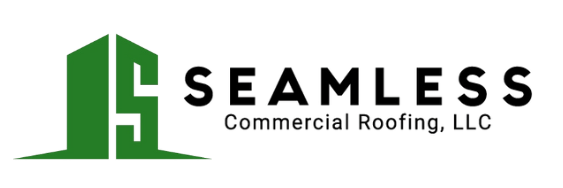EPDM Roofing Explained
If you are considering EPDM roofing for your commercial building, it’s essential to understand the characteristics and lifespan of this popular roofing material, as well as the various installation methods available to ensure long-term performance and durability.
Characteristics and Lifespan
EPDM rubber roofing membranes are renowned for their durability, versatility, and cost-effectiveness when compared to other flat roof materials such as TPO. These membranes are stable over time and can have an impressive life expectancy of over 50 years (Holcim Elevate). Made primarily from recycled tires, slate, and sawdust for added strength and durability, EPDM roofs offer a reliable and long-lasting solution for your commercial property.
| Roofing Material | Life Expectancy |
|---|---|
| EPDM Roofing | 50 years |
EPDM roofing membranes consist of synthetic rubber composed of ethylene and propylene, derived from oil and natural gas. This composition provides the necessary durability and resilience to withstand various weather conditions and environmental factors.
Installation Methods
When it comes to installing EPDM roofing, choosing the right method is crucial for ensuring the longevity and performance of your roofing system. Fully adhered EPDM roofs offer unparalleled wind resistance and stability, making them the ideal choice for long-term protection and durability.
Studies have shown that EPDM rubber membranes can last over 30 years, and some original installations from the 1960s are still in good condition. To maximize the lifespan of your EPDM roof, it’s recommended to have it installed by a manufacturer-certified roofer using a fully-adhered application method. This method, combined with regular maintenance schedules throughout the roof’s lifecycle, can extend the lifespan of EPDM roofs to 40 years or more.
When opting for EPDM roofing, it’s crucial to factor in regular repair and maintenance costs to ensure the roof remains in optimal condition. These repairs may include sealing seams and fixing cracks to prevent water infiltration and maintain the integrity of the roofing system.
By understanding the characteristics, lifespan, and installation methods of EPDM roofing, you can make an informed decision when selecting a reliable and durable roofing solution for your commercial property.EPDM roofing membranes offer a cost-effective and long-lasting option for businesses looking to protect their investment and ensure the safety and integrity of their buildings.
Pros and Cons of EPDM Roofing
When considering EPDM roofing for your commercial building, it’s essential to weigh the advantages and disadvantages associated with this roofing material. Understanding both the benefits and drawbacks can help you make an informed decision tailored to your specific building needs.
Advantages
EPDM roofing is widely recognized for its numerous advantages, making it a popular choice for commercial properties. Here are some key benefits of EPDM roofing:
- Durability: EPDM roofing is known for its proven performance and durability, with a lifespan of up to 30 years or more. This longevity is a significant advantage for business owners looking for a cost-effective roofing solution with long-term performance.
- Weather Resistance: EPDM roofing provides excellent resistance against harsh weather conditions, including UV exposure, extreme temperatures, and high winds. Its composition of ethylene, propylene, and diene contributes to its flexibility and ability to withstand various climates (Roof Corp).
- Cost-Effective: EPDM roofing is one of the most affordable roofing materials available, costing approximately $0.80 per square foot. Despite its cost-effectiveness, EPDM roofing can last 20+ years, making it a financially prudent choice for commercial building owners.
- Minimal Maintenance: EPDM roof membranes remain stable over time and require minimal maintenance. With proper installation and periodic inspections, EPDM roofs can have a life expectancy of over 50 years.
Disadvantages
While EPDM roofing offers many benefits, there are some disadvantages to consider before making a decision:
- Installation Complexity: The installation of EPDM roofing can be more complex compared to other roofing materials. It requires careful attention to detail and skilled professionals to ensure proper installation and optimal performance.
- Puncture Vulnerability: EPDM roofing membranes can be susceptible to punctures from sharp objects, such as falling branches or debris. Regular inspections and prompt repairs are essential to prevent any damage from compromising the integrity of the roof.
- Limited Color Options: EPDM roofing is primarily available in black or dark gray colors, which may not be suitable for buildings where aesthetics are a crucial consideration. Limited color options may restrict design choices for some property owners.
- Environmental Impact: EPDM roofing is made from synthetic rubber, with its primary ingredients derived from oil and natural gas. While it provides energy efficiency benefits, there are environmental implications associated with the production and disposal of EPDM roofing materials.
By evaluating both the advantages and disadvantages of EPDM roofing, you can make an informed decision that aligns with your commercial building’s requirements and long-term goals. Consulting with roofing professionals and conducting thorough research can help you determine if EPDM roofing is the right choice for your property.

